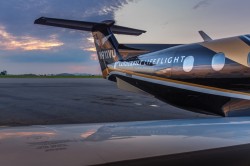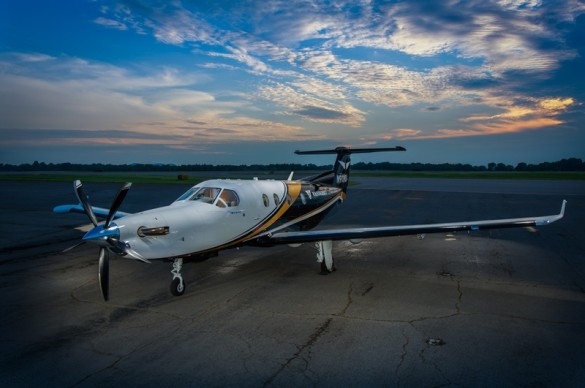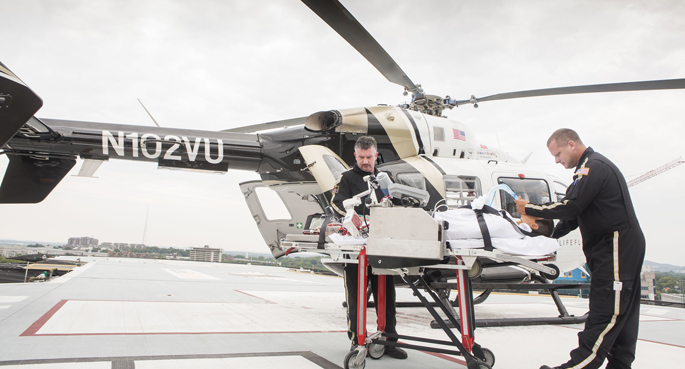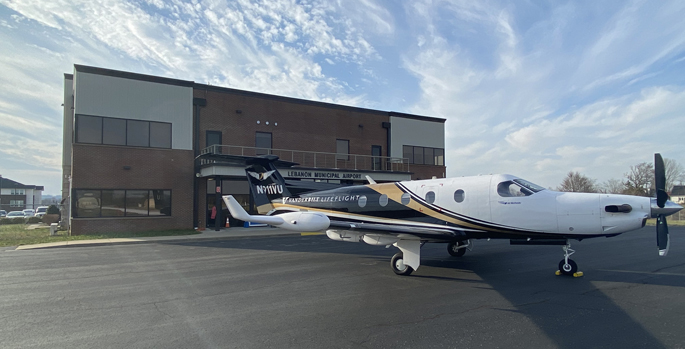by Jerry Jones
Vanderbilt LifeFlight is adding a new airplane that will provide emergency medical transportation for infants, children and adults located essentially anywhere in the U.S.
The Pilatus PC-12 turbo prop, based at Nashville International Airport, is slightly larger than the program’s previous airplane. Vanderbilt LifeFlight has been providing long-range emergency airplane service since 2004.
The types of patients transported on the airplane reflect Vanderbilt’s unique services. The airplane brings highly specialized care provided by the Monroe Carell Jr. Children’s Hospital at Vanderbilt and Vanderbilt University Medical Center (VUMC) directly to the patient.
The airplane transports all ages of critically ill patients including transplant recipients, burn victims, neonate and pediatric critical care patients. The plane has a range of 1,742 miles and can cruise at speeds approaching 300 mph.
VUMC is home to the area’s only Level 1 Trauma Center and Regional Burn Center. In Tennessee, the majority of significant adult and pediatric burn injuries are treated at Vanderbilt. The Medical Center’s neonatal and pediatric services are also in high demand since the Monroe Carell Jr. Children’s Hospital at Vanderbilt is the only facility serving Middle and East Tennessee to offer extra corporeal membrane oxygenation (ECMO) in combination with cardiac surgery for neonates and children.
 The new airplane is equipped as a mobile intensive care unit with full life-support capabilities. Blood is available if an inflight blood transfusion is necessary. An Intra-aortic balloon pump (IABP), which is a mechanical device that helps the heart pump blood, is also available. The plane is staffed by some of the nation’s most highly qualified critical care registered nurses and paramedics. Additionally, respiratory therapists and heart perfusionists are available. Should a neonate need specialized care, a team from Children’s Hospital can be rapidly assembled and flown to the patient.
The new airplane is equipped as a mobile intensive care unit with full life-support capabilities. Blood is available if an inflight blood transfusion is necessary. An Intra-aortic balloon pump (IABP), which is a mechanical device that helps the heart pump blood, is also available. The plane is staffed by some of the nation’s most highly qualified critical care registered nurses and paramedics. Additionally, respiratory therapists and heart perfusionists are available. Should a neonate need specialized care, a team from Children’s Hospital can be rapidly assembled and flown to the patient.
“We use the most state-of-the-art equipment available, which includes digital capnography, invasive line management, and intra-aortic balloon pump transports,” explained John Kennedy, RN, EMT, chief flight nurse over the airplane. “We utilize cutting-edge airway technology including video laryngoscopy, advanced portable ventilators, and a variety of adjuncts for securing difficult or complex airways for all age groups.”
The airplane is just one component of a network that provides integrated transportation services including helicopters and critical care ground transportation. LifeFlight will transport patients to any appropriate facility.
“Vanderbilt has a highly sophisticated integrated transportation system where we use the right vehicle for the right patient at the right time,” explained Stephan Russ, M.D., associate Chief of Staff and associate professor in Emergency Medicine at Vanderbilt.
The airplane is owned and operated by Air Methods, with all medical care provided by VUMC staff and faculty.
















